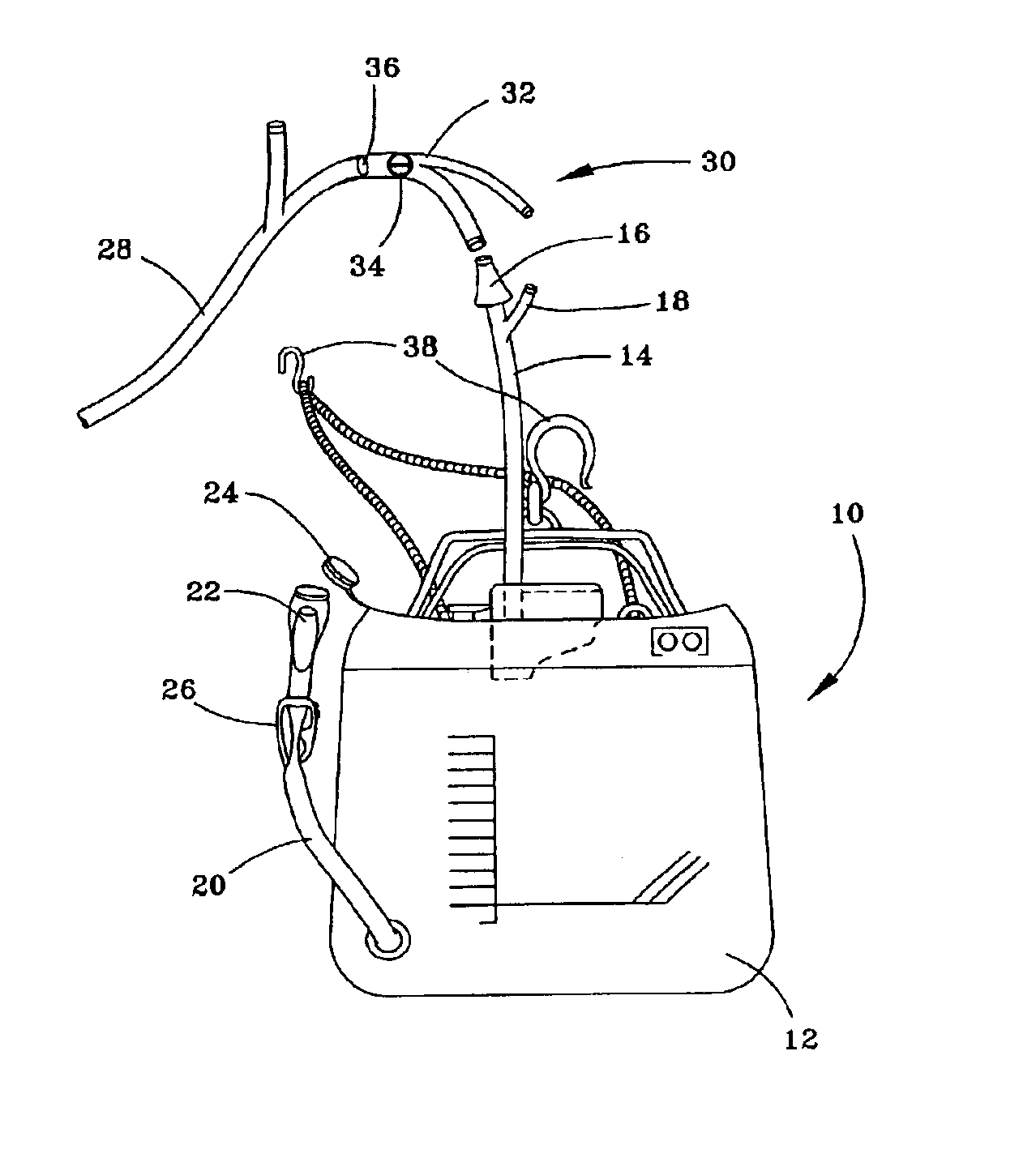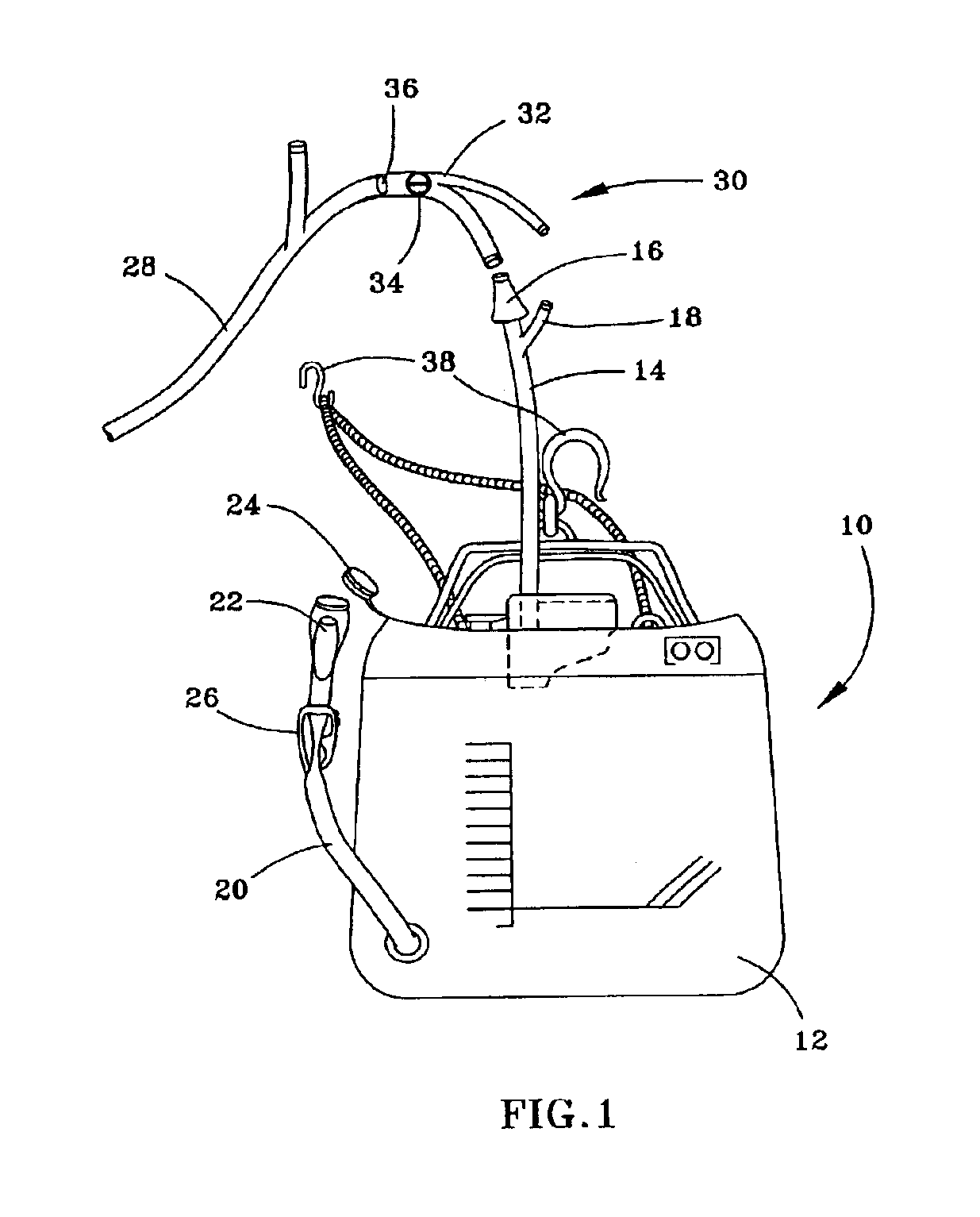Method for decreasing catheter-associated bacteriuria
a catheter and bacteriuria technology, applied in the field of methods, can solve the problems of high urinary tract infection incidence of urinary catheters, inability to routinely administer anti-septic bladder irrigation, and inability so as to reduce the incidence of urinary tract infections and reduce the incidence of catheter-associated bacteriuria
- Summary
- Abstract
- Description
- Claims
- Application Information
AI Technical Summary
Benefits of technology
Problems solved by technology
Method used
Image
Examples
Embodiment Construction
s by decreasing a patient's risk in polymicrobial bacterial propagation within the catheter drainage system, such that the incidence of catheter-acquired bladder bacteriuria can be reduced.
[0015]Other objects and advantages of this invention will be better appreciated from the following detailed description.
BRIEF DESCRIPTION OF DRAWINGS
[0016]FIG. 1 is a schematic representation of a urinary collection bag suitable for use with the present invention.
DETAILED DESCRIPTION
[0017]A research study leading to the present investigation was carried out to investigate whether the one-time instillation and drainage of certain treatment solutions into a urinary drainage bag could significantly reduce polymicrobial bacteriuria colonization and subsequent microbial propagation into the bladder in long-term catheterized populations, as measured at twenty-four hour intervals over three days.
[0018]Key variables investigated were the types of irrigation solution evaluated and the types and levels of b...
PUM
 Login to View More
Login to View More Abstract
Description
Claims
Application Information
 Login to View More
Login to View More - R&D
- Intellectual Property
- Life Sciences
- Materials
- Tech Scout
- Unparalleled Data Quality
- Higher Quality Content
- 60% Fewer Hallucinations
Browse by: Latest US Patents, China's latest patents, Technical Efficacy Thesaurus, Application Domain, Technology Topic, Popular Technical Reports.
© 2025 PatSnap. All rights reserved.Legal|Privacy policy|Modern Slavery Act Transparency Statement|Sitemap|About US| Contact US: help@patsnap.com


